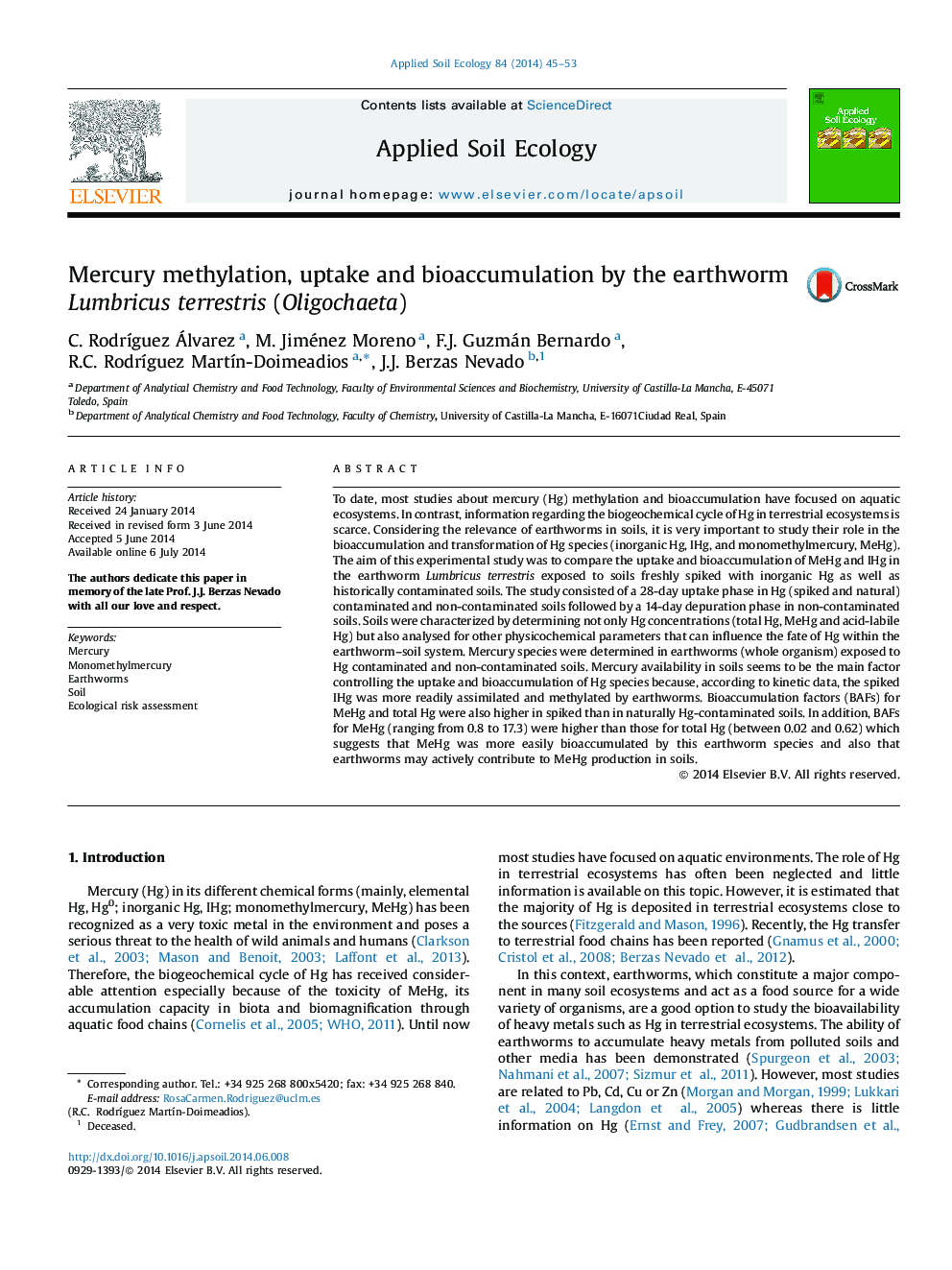| کد مقاله | کد نشریه | سال انتشار | مقاله انگلیسی | نسخه تمام متن |
|---|---|---|---|---|
| 4382167 | 1617799 | 2014 | 9 صفحه PDF | دانلود رایگان |
عنوان انگلیسی مقاله ISI
Mercury methylation, uptake and bioaccumulation by the earthworm Lumbricus terrestris (Oligochaeta)
دانلود مقاله + سفارش ترجمه
دانلود مقاله ISI انگلیسی
رایگان برای ایرانیان
کلمات کلیدی
موضوعات مرتبط
علوم زیستی و بیوفناوری
علوم کشاورزی و بیولوژیک
بوم شناسی، تکامل، رفتار و سامانه شناسی
پیش نمایش صفحه اول مقاله

چکیده انگلیسی
To date, most studies about mercury (Hg) methylation and bioaccumulation have focused on aquatic ecosystems. In contrast, information regarding the biogeochemical cycle of Hg in terrestrial ecosystems is scarce. Considering the relevance of earthworms in soils, it is very important to study their role in the bioaccumulation and transformation of Hg species (inorganic Hg, IHg, and monomethylmercury, MeHg). The aim of this experimental study was to compare the uptake and bioaccumulation of MeHg and IHg in the earthworm Lumbricus terrestris exposed to soils freshly spiked with inorganic Hg as well as historically contaminated soils. The study consisted of a 28-day uptake phase in Hg (spiked and natural) contaminated and non-contaminated soils followed by a 14-day depuration phase in non-contaminated soils. Soils were characterized by determining not only Hg concentrations (total Hg, MeHg and acid-labile Hg) but also analysed for other physicochemical parameters that can influence the fate of Hg within the earthworm-soil system. Mercury species were determined in earthworms (whole organism) exposed to Hg contaminated and non-contaminated soils. Mercury availability in soils seems to be the main factor controlling the uptake and bioaccumulation of Hg species because, according to kinetic data, the spiked IHg was more readily assimilated and methylated by earthworms. Bioaccumulation factors (BAFs) for MeHg and total Hg were also higher in spiked than in naturally Hg-contaminated soils. In addition, BAFs for MeHg (ranging from 0.8 to 17.3) were higher than those for total Hg (between 0.02 and 0.62) which suggests that MeHg was more easily bioaccumulated by this earthworm species and also that earthworms may actively contribute to MeHg production in soils.
ناشر
Database: Elsevier - ScienceDirect (ساینس دایرکت)
Journal: Applied Soil Ecology - Volume 84, December 2014, Pages 45-53
Journal: Applied Soil Ecology - Volume 84, December 2014, Pages 45-53
نویسندگان
C. RodrÃguez Álvarez, M. Jiménez Moreno, F.J. Guzmán Bernardo, R.C. RodrÃguez MartÃn-Doimeadios, J.J. Berzas Nevado,